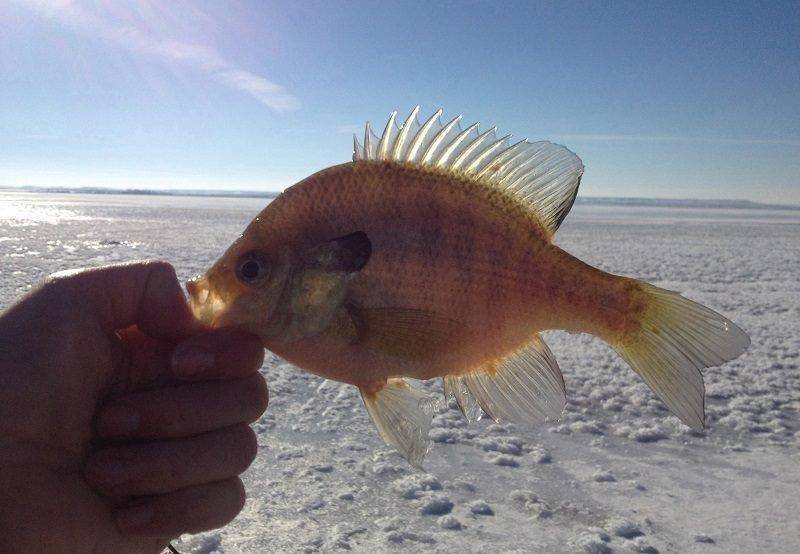DWR Press Release
Roosevelt — If you’re an avid Pelican Lake angler, you’ve likely noticed that the bluegills you’ve caught over the past 10 years have gotten smaller in size.
Before that time, the Blue Ribbon water that sits 25 miles southeast of Roosevelt was the place to go to catch big bluegills in Utah. Pelican Lake also hosted a healthy population of largemouth bass. After an influx of large numbers of common carp in 2008 and 2009, however, the fishery, especially the bluegill fishery, declined rapidly.
“I’ve heard of no instances where bluegill have outcompeted carp in a fishery,” says Trina Hedrick, regional aquatics manager for the Division of Wildlife Resources. “Everything I’ve read says just the opposite: carp do well and bluegill struggle to survive.”
That’s exactly what DWR biologists have seen during fish sampling surveys at the lake over the last few years. Bluegill are growing at a slower rate. And their body condition, or the relationship between the fish’s weight and its length, has declined too.
Because they rely mostly on their eyes to find their prey, bluegill need clear water. Unfortunately, carp are notorious for rooting for snails and other invertebrates in submerged vegetation. The rooting the carp do decimates the vegetation. Once the vegetation is gone, the wind stirs sediment off the bottom of the lake and keeps it suspended in the water. Suspended sediments make the water cloudy, and bluegill can’t find their prey. The result is stunted bluegill.
Unlike bluegill anglers, those who fish for largemouth bass probably haven’t witnessed much of a change; so far, the growth and condition of largemouth in the lake has not been affected significantly.
So, when can anglers expect to see common carp affect the lake’s largemouth bass population? DWR biologists aren’t waiting long enough to find out.
Treating the lake
In 2016, DWR representatives and anglers that make up the Pelican Lake Management Team held several open discussions to decide the fate of Pelican Lake. The result? The common carp must be removed. And the only way to completely eradicate carp is by treating the lake with rotenone.
The “reset” button for the lake is scheduled to be pushed in fall 2017. Pushing the button ultimately depends on water levels, though.
“To do the treatment,” Hedrick says, “we have a target water elevation we need to achieve. We’ll work with the irrigation district to see if that water level will happen this year. There’s also a lot of snow on the mountain right now. We’ll be waiting to see how that snow translates to water levels in Pelican Lake over the upcoming year.”
Hedrick says uncertainty is difficult to deal with “but if water levels are too high, the treatment will be too expensive. Also, if too much bulrush is inundated with water, we risk our ability to completely eradicate the carp. We just can’t take that risk.”
If water levels prohibit a treatment in 2017, the DWR will pursue and complete the treatment in 2018.
The wait will be worth it
Hedrick says the management team is committed to providing quality largemouth bass and large bluegill in Pelican Lake by improving water clarity and eliminating the invasive carp. “We need folks to be patient,” she says. “After the treatment happens, it will take a few years for fish in the lake to grow to a catchable size. The wait will be worth it in the end, though.”
Before the treatment happens, the DWR has liberalized bag limits at Pelican Lake so you can take fish that will be lost. There’s no limit on the number of bluegill you can keep. And the largemouth bass limit has been doubled to 12 fish a day. For more information, call the DWR’s Northeastern Region office at 435-781-9453.

